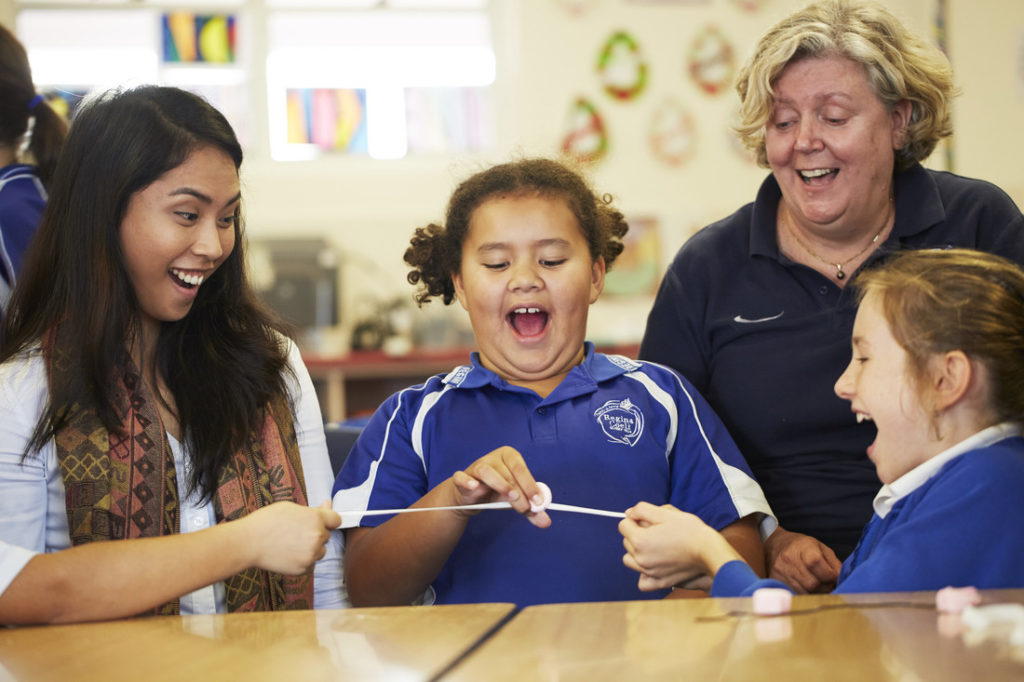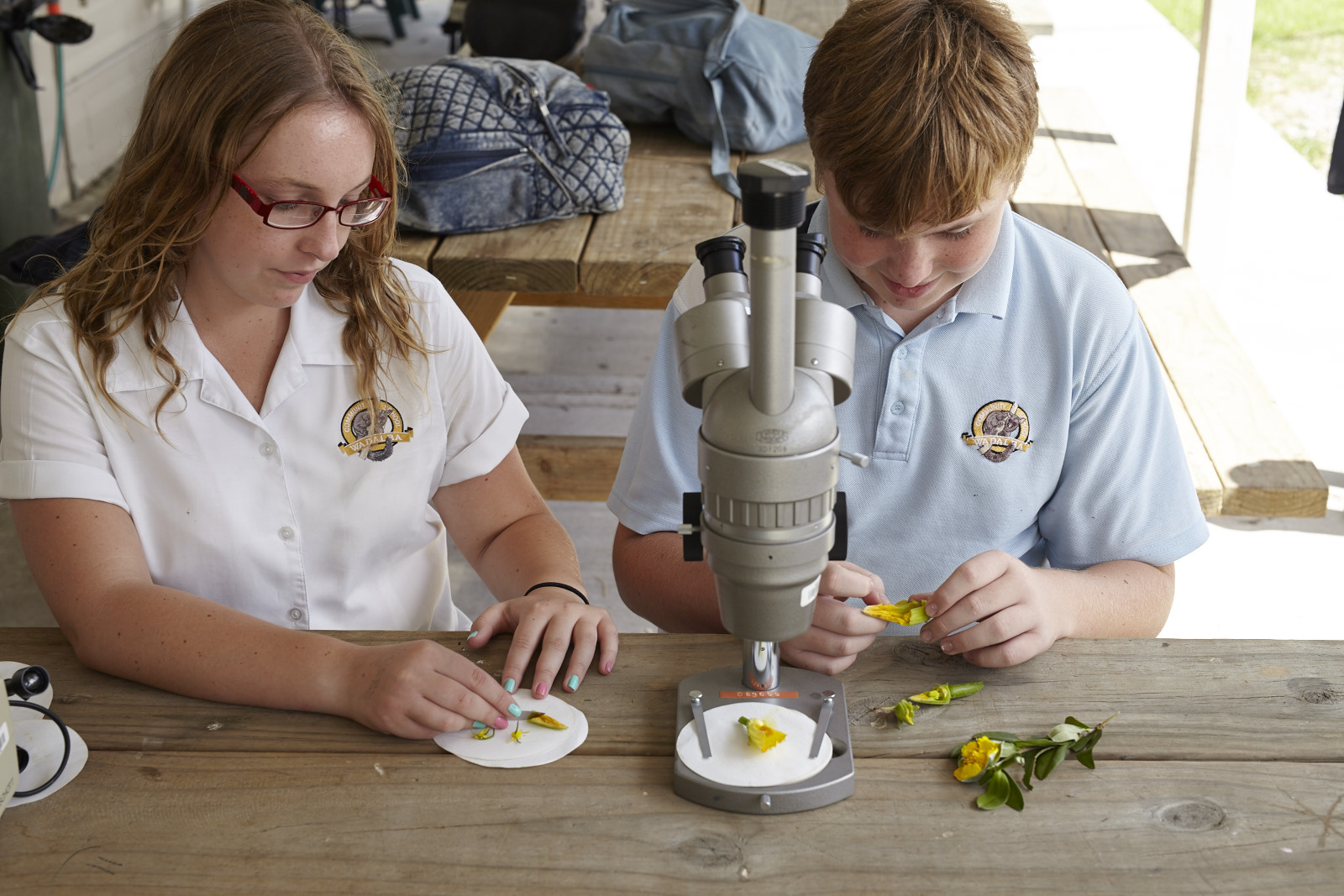
Our Scientists and Mathematicians in Schools program in action.
STEM – it’s a word that’s bandied around a lot lately. But what does it mean? At the very least it’s an acronym that stands for Science, Technology, Engineering and Maths (and sometimes you might see STEAM with A for Arts or STEMM when an extra M for Medicine is included).
But it’s much more than an acronym – it’s potentially your passport for the future. Research has shown that students who study STEM are more creative, flexible and able to take advantage of the changes that are predicted in the workforce and workplaces of the future. Jobs from accounting, construction, nursing, to hair dressing all use STEM skills – let alone what the jobs of the future might be.
As technology and IT disrupts more and more industries, there’s a real concern that there won’t be enough STEM-qualified people to work in the jobs of the future. But how do we get more people interested in and taking up STEM subjects at school?
For students it’s difficult to take in information and get excited about what is taught in the classroom if they don’t understand how it can be applied and how it’s relevant to them. How can you consider a career if you don’t know what options there are and what it would be like?
Evidence from our STEM Professionals in Schools program shows that bringing the teaching and STEM professionals together in partnerships has profound benefit for students, schools, teachers and STEM professionals. For that reason we think it’s important to get more industry professionals into classrooms to demonstrate the diversity and excitement of STEM careers in the real-world.
We held an event this week with our SMiS partners to talk about the challenges that educators face when teaching STEM and how government, universities, research organisations and corporate businesses can all play a part in ensuring our kids get the best education possible.
We’ve called on some of those partners to give you an insight into those discussions.

Two students are sitting at a table doing a classroom science experiment. The female student on the right is looking at the pollen of a plant on a circular white sheet of paper. The male student on the left has a microscope in front of him and he is prepping a plant to view under the microscope.
Our STEM Professionals in Schools program helps to pollinate ideas in the classroom.
Rebecca Smith, Head of Science, Cathedral School Townsville
“It was my very own biology and chemistry teachers who inspired me to pursue a career in science education. My teaching philosophy is about ensuring we search for ideas and ways to be able to link classroom learning beyond school – to teach students to deal with scientific knowledge in a critical and creative way, and to apply what they learn to everyday real-world problems. That’s why I think the Scientists and Mathematicians in Schools program is so great. I work with Professor Jim Burnell from James Cook University to bring real-world biology and chemistry into my classroom. When one of my students tells me they want to be a scientist or an engineer or work with technology, I know I’m doing a good job.”
Sae Kwon, Vice President of Technical Services, Cisco Australia
“Cisco recently partnered with CSIRO’s SMiS program as part of our AUSTEM2020 initiative to tackle the STEM skills shortage and help Australia become more innovative. For me, it’s a real privilege to give back to the students that will be tomorrow’s great innovators through the program. Industry professionals are needed to help bring technology to life and show kids how technology is used to enable businesses, make cities smart, transform countries and provide critical support in disaster recovery situations around the world. The kids are fascinated that I talk to them from other countries like Singapore over video conference. It’s great to be able to talk about the cool jobs available, the great people you get to meet, the many countries you can visit and all the fun you can have working in STEM. I was certainly not aware of the cool jobs that exists in STEM until I started working in the field. These days STEM education has too much competition through the various social networking and games available online. We need to make STEM education fun again.”
Megan Lily, Head of Workforce Development, Ai Group
“The relative decline of STEM skills is holding back our national economy and causing real frustration for employers. The demand for STEM graduates is increasing, especially as technology is infiltrating more and more industries, but at the moment the number of students entering the workforce is not keeping up with this demand. That’s why I think it’s so important businesses to invest in the future innovative workforce by helping teachers and schools through programs like Scientists and Mathematicians in Schools.”
Dr Roslyn Prinsley, National STEM Adviser, Office of the Chief Scientist
“I’m constantly inspired by the scientists and students I meet. We have some of the finest problem-solvers in the world and we will need more of them in the future so we are training up the next generation to follow their lead. I am also really excited with the partnership between SMiS and the Ai Group which grew out of a project that the Office of the Chief Scientist funded through Ai Group looking at good practice industry engagement with schools. SMiS was identified as a high-quality program that Ai Group and others could partner with to increase industry participation in, and support for, schools so I’m pleased to see the results of that work playing out now.”
STEM Professionals in Schools is supported by the Australian Government through the Department of Education and Training which recently provided $10 million for CSIRO to extend program.
Want to get involved?
We’re looking for STEM professionals and teachers to get involved in our Scientists and Mathematicians in Schools program and inspire students


Pingback: Review: Makerspaces in Whitehorse Manningham Libraries—STEM-focused, but creativity-driven. (Week 10) – The dewey and the decimal
13th August 2017 at 1:02 pm
Why did you chose an acronym that has the potential to cause confusion with Stem cell technology? Science is about maximising clarity by dispelling confusion.
9th September 2016 at 10:35 pm
My nieces took up the STEM challenge but found there aren’t enough traineeships once they are qualified. Management traineeships ignore STEM. Should be STEAM because communication is vital.